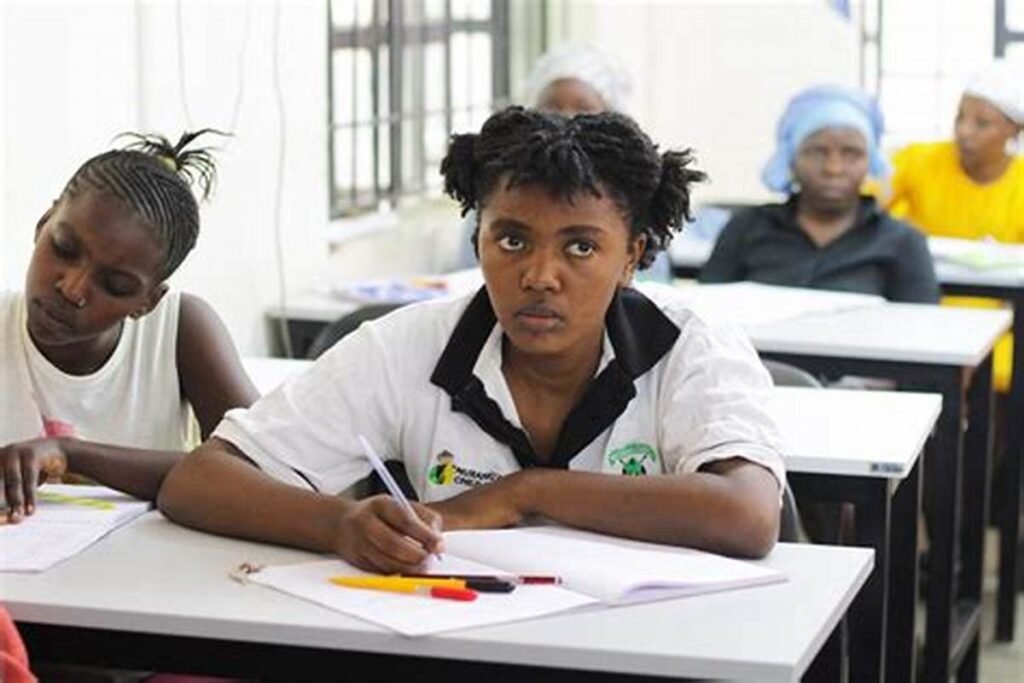In this comprehensive lesson plan, we will explore essential concepts related to economic growth, development, and planning. Each topic will be explained in detail, with clear examples to ensure that students, even those with limited knowledge, can easily understand the material. Our goal is to provide expert-level insights that will drive traffic, engage readers, and help students grasp these critical aspects of economics.
1. Economic Growth and Development
Economic Growth: Economic growth refers to the increase in a country’s output of goods and services over time. It is typically measured by the increase in Gross Domestic Product (GDP). Growth occurs when a country produces more goods and services than it did in the previous period, which can be achieved through an increase in capital, labor, or technology.
Example: If Nigeria’s GDP increases from $450 billion to $500 billion, it indicates an economic growth of $50 billion, which can reflect increased industrial production, higher export earnings, or improved services.
Economic Development: Economic development is a broader concept than growth. It encompasses improvements in living standards, poverty reduction, better healthcare, education, and overall societal well-being. Economic development not only focuses on increasing national income but also on how the benefits are distributed across the population.
Example: The construction of schools, hospitals, and roads, along with better access to clean water and electricity, are indicators of economic development.
Key Differences:
- Economic Growth: Focuses primarily on quantitative measures (GDP).
- Economic Development: Focuses on improving quality of life (health, education, income distribution).
2. Economic Development Planning
Economic development planning involves creating strategies to improve a country’s economic performance. It requires careful forecasting and policy decisions to address key areas such as infrastructure, education, health, and employment. Effective planning ensures that economic growth translates into development, ensuring the benefits reach all segments of the population.
Example: In Nigeria, the National Economic Empowerment and Development Strategy (NEEDS) aimed to reduce poverty, create jobs, and increase opportunities for all Nigerians through well-structured development planning.
Process of Economic Development Planning:
- Setting Objectives: Establish clear goals such as improving infrastructure or reducing unemployment.
- Resource Allocation: Deciding how to best use resources like labor, capital, and technology.
- Policy Formulation: Developing policies to support economic objectives, such as tax policies or industrial policies.
- Monitoring and Evaluation: Continuously assessing the progress of development plans to ensure goals are being met.
3. International Economic Organizations
International economic organizations are global bodies that facilitate cooperation between countries to promote economic stability, development, and trade. They play a key role in addressing global economic challenges and improving the economic conditions of member countries.
Key International Economic Organizations:
- World Bank: Provides financial and technical assistance to developing countries for development projects (e.g., infrastructure, education).
- International Monetary Fund (IMF): Works to stabilize exchange rates and provide financial support to countries facing balance of payments problems.
- World Trade Organization (WTO): Facilitates international trade by creating rules and resolving disputes between countries.
Example: The World Bank’s funding of a road construction project in a developing country can help boost local economies by improving transportation networks, which can further stimulate trade and business.
4. Current Economic Plans, MDGs, Needs, Vision 2025
Current Economic Plans: Countries implement national economic plans to direct their economies toward specific objectives, such as reducing poverty, increasing employment, or fostering technological innovation. These plans typically involve multi-year strategies and action steps.
MDGs (Millennium Development Goals): The MDGs were eight international development goals established by the United Nations in 2000 to be achieved by 2015. These included eradicating extreme poverty, achieving universal primary education, and reducing child mortality.
Example: One of Nigeria’s MDGs was to reduce poverty by half by 2015. Although challenges remained, significant strides were made in areas such as education and healthcare.
Vision 2025: Vision 2025 was a Nigerian government initiative aimed at making the country one of the 20 largest economies in the world by 2025 through industrialization, poverty reduction, and improved infrastructure.
Example: Through Vision 2025, the Nigerian government focused on diversifying the economy, improving energy production, and boosting agricultural productivity to reduce reliance on oil.
5. Economic Development Challenges
Economic development is often accompanied by various challenges that can hinder a country’s progress. Some common challenges include:
- Poverty: Despite growth, many nations, especially in Africa, still face widespread poverty, which can undermine development efforts.
- Corruption: Misallocation of resources and lack of transparency in government operations can prevent funds from reaching areas where they are needed most.
- Unemployment: High levels of unemployment, especially among youth, can slow down economic development and lead to social instability.
- Inadequate Infrastructure: Poor infrastructure such as bad roads, insufficient power supply, and lack of water systems can limit economic growth and development.
Example: In Nigeria, the challenge of inadequate infrastructure, such as poor roads and erratic power supply, often limits the growth of small businesses and reduces the attractiveness of the country for foreign investments.
6. Economic Reform Programs
Economic reform programs are initiatives aimed at improving a country’s economic structure and policies to achieve sustainable growth. These reforms typically focus on improving government efficiency, strengthening institutions, and reducing economic imbalances.
Examples of Economic Reform Programs:
- Privatization: This involves selling state-owned enterprises to private investors to increase efficiency.
- Market Liberalization: Reducing government control over industries to allow market forces (demand and supply) to determine prices.
- Structural Adjustment Programs (SAPs): Programs introduced by the World Bank and IMF to help countries stabilize their economies by implementing fiscal reforms, reducing government expenditure, and encouraging exports.
Example: Nigeria’s Structural Adjustment Program in the 1980s aimed to reduce the government’s control over the economy, promote free-market policies, and reduce dependence on oil exports.
Reading Assignment and Evaluation Questions
Reading Assignment:
- Read Chapters 7 and 8 from your Economics textbook on economic growth, development, and planning.
- Watch the documentary on “Economic Reforms in Nigeria” to understand the historical context.
- Review the latest national economic plans and Vision 2025 reports from the Nigerian government.
Evaluation Questions:
- What is the difference between economic growth and economic development? Give examples.
- Explain the key steps involved in economic development planning.
- Name three major international economic organizations and explain their functions.
- What were the key goals of the MDGs and how did they impact global development?
- How did Vision 2025 aim to transform Nigeria’s economy?
- Identify and explain at least three challenges to economic development in developing countries.
- Discuss the main components of an economic reform program. How do these reforms promote sustainable growth?
Conclusion
In this lesson, we have covered important concepts related to economic growth and development, international economic organizations, economic planning, and challenges faced by countries in their development journey. Understanding these topics is crucial for any student of economics as they form the foundation of both national and global economic policies.

